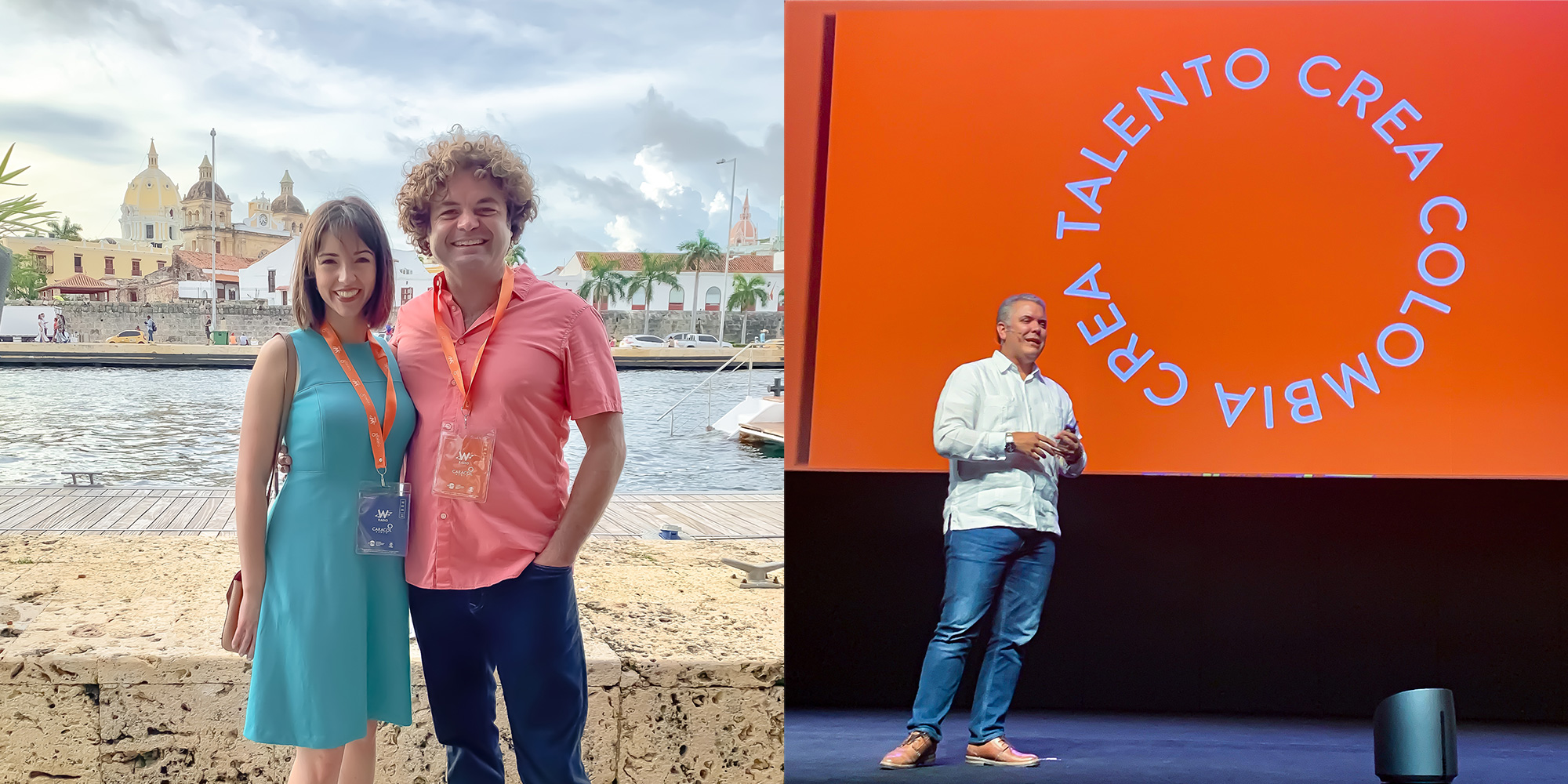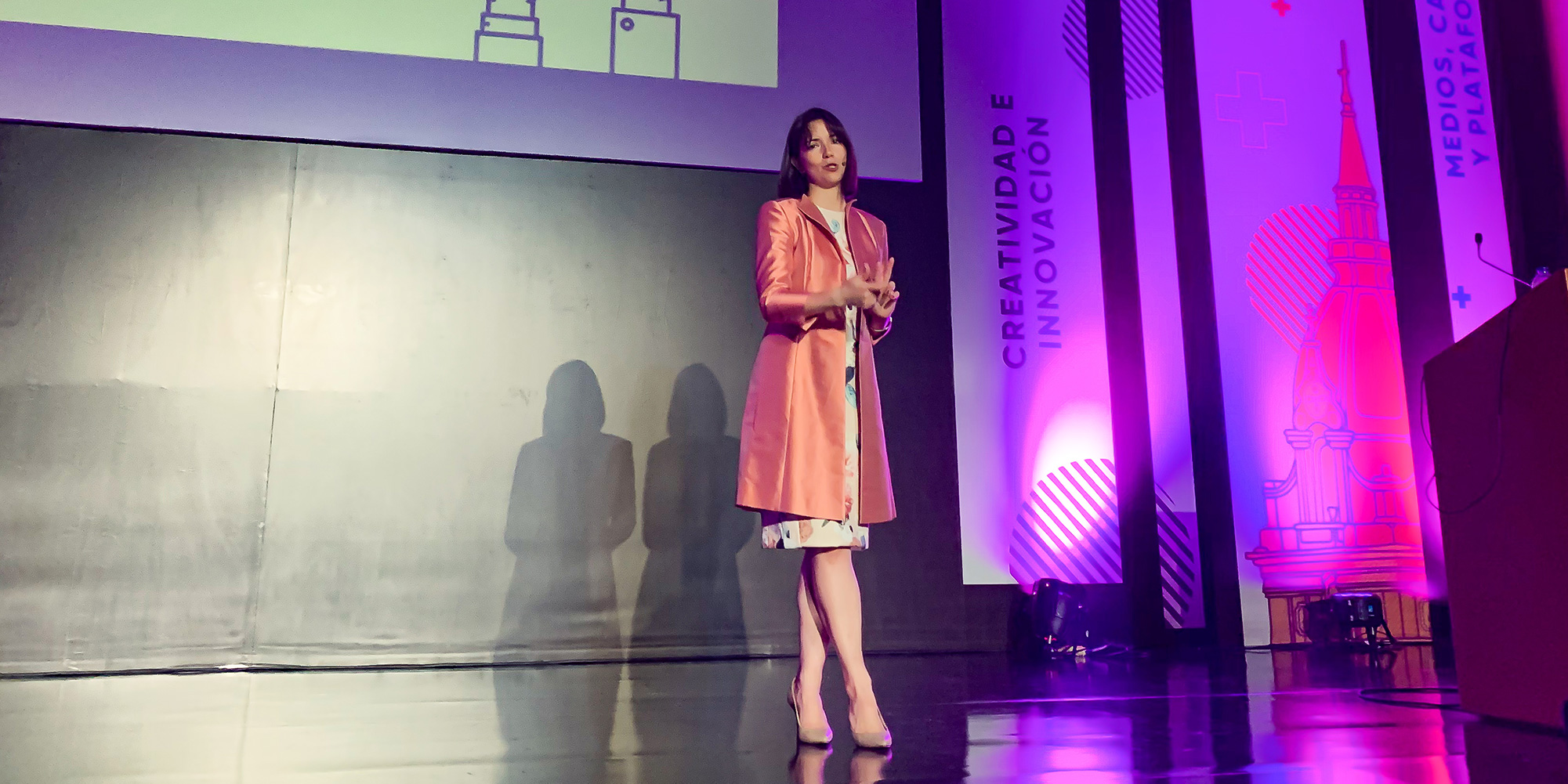Top Takeaways from Más Cartagena
Last week I was thrilled to be in Colombia to speak at Más Cartagena, the Latin American Summit of communication, creativity, innovation, and marketing. The conference covered many themes— from the influence of culture and technology on society to reflections on the links between consumers to brands. We discussed how to inspire transformation and innovation across the world and I focused in particular about the evolving role of creativity and how this adds value to brands and organizations. On my flight home I digested everything I learned and wanted to share my top takeaways here.
El Presidente
I got to briefly meet Colombian President Iván Duque! He almost mistook me for a member of his cabinet until the national anthem came on and I was busted for not knowing the words. He gave an intriguing presentation about the development of the “Orange Economy” in Colombia. The Orange Economy, also known as the Creative Economy, is a concept developed by Duque and Felipe Buitrago—current Viceminister of Orange Economy who I also had the pleasure of meeting—that takes orange as the dominant color for culture, creativity and identity. Duque pointed out that creativity is a main part of value creation in the Colombian economy, and there is a huge social impact that creative and tech industries have.

Left: Sylvia & Keyvan in Más Cartagena conference, Right: Colombian President Ivan Duque unveiling Colombia’s new seal
Strategy needs creativity
How creativity can help shape strategy:
- Creativity helps businesses innovate by giving shape to and concretizing data-informed ideas.
- Design, as a methodology, facilitates collaboration among interdisciplinary teams and helps make ideas happen by creating experiences.
- Through constant iteration that helps to validate and correct assumptions, design thinking helps organizations contextualize their ideas and be more empathetic.
- By providing tools and distributing the responsibility to deliver a great customer experience, computational design and design systems are making companies more agile and reducing the time-to-market for new ideas.
- By leveraging inclusive design, businesses can expand their markets, rethink the quality and performance of their products and services, and diversify their teams.
Democratizing access
There were tons of great sessions throughout the week, and I enjoyed Rohan Tambyrajah’s presentation covering 10 strategies for a new generation of challenger brands. Tambyrajah—the Chief Strategy Officer of a UK-based agency— then interviewed Louise McKerrow, Director of Branding for Mercado Libre, about how Mercado Libre is thriving as one of these challenger brands. McKerrow said the biggest accomplishment for the brand was being able to democratize access and bring to the masses what was previously available only to the elite. Their Mercado Pagó offers banking products and services like debit cards and credit to populations who were previously unbanked.

Sylvia speaking at the Más Cartagena conference
What will my child think?
As the mother of a precocious (and precious) toddler, I especially appreciated the insight brought out by Gabriela Scardaccione—Creative Director at Mother/MADRE— in her presentation. She asked us all to consider this question: Would my child, tomorrow, be proud of the work that I am doing today? In today’s world we are overwhelmed by data analysis and artificial intelligence pushing algorithmic decisions, but she prompts us all to use our hearts to decide what messages we want to propagate. We, as the creative industry, have an obligation to do right by our children through the brands our industry helps.
Inclusive, not exclusive
Another major theme was discussing the need for inclusive design. As Christina Mallon, Inclusive Design Lead at Wunderman Thompson, outlined during her keynote, brands absolutely have to think about access for disabled users because they are the largest minority group in the world. At some point in our life, all of us will be disabled. One in five people worldwide consider themselves disabled, and in the U.S. the number is one in four people. Did you know that the touchscreen was designed by someone who had arthritis in two of his fingers? And self-driving cars were invented by someone with a visual disability?
At the summit, we were challenged to use design as an equalizer. You feel disabled when the environment around you makes you feel disabled, so how can we design a world where the environment makes everyone equally mobile and productive? While it’s good to design products like this as a social good, you have to be sure that the end result is used by the people you created it for, not just a pie-in-the-sky idea that only sounds good on paper. In the last five years, Microsoft has become extremely focused on creating products that are very inclusive, largely thanks to the influence of Kat Holmes who was Principal Director of Inclusive Design from 2014-2017.
What is inclusive design?
Inclusive design is the process of designing for as many audiences as possible to create the most inclusive experience or product.
3 principles of inclusive design
- Recognize exclusion
- Learn from diversity
- Solve for one, extend to many
When you design a solution to cover an edge case, your product can actually become a better experience for everyone—for example, the touchscreen that helps arthritic users is easily used by everyone.
Now what?
After returning to the Bay Area with new creative contacts from all corners of the globe, I’m confident that my team here will be energized to continue doing the great work in creating value for the organizations and brands we support. We are proud to work on making clients’ websites more accessible for all users and if you’re looking for help in that area, please reach out.

